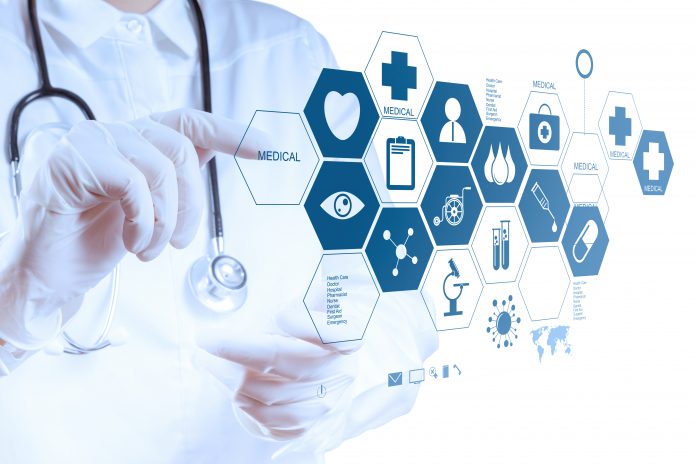Technology
How Blockchain Is Transforming Health Care
Originally developed for cryptocurrency in 2008, blockchain allows a distributed network of computers to keep a tamper-proof digital ledger.
The technology, however, is useful whenever collaborating parties have competing interests that require a third-party guarantor. Large health care organizations have been remarkably quick to adopt blockchain.
In 2017, IBM reported that 16% of the 200 health care executives it surveyed from 16 countries anticipate a release of a commercial blockchain solution, and 90% of health care companies expect to launch a pilot blockchain project by 2018.
To date, blockchain in health care has mostly been used for audit trails and payments for value-based care. However, it has the potential to be used for much broader applications, especially given the rapid emergence of the internet of medical things (IoMT). Blockchain may soon allow smartwatches and smartphones to load clinical information directly to the clinical record.
Barriers To EHR Usability
In the past, software developers in health care were limited by complex, heterogeneous security requirements. According to Canada Health Infoway requirements, the industry standard for electronic health records, EHRs must do three things: encrypt data transmitted over email, preserve personal health history and verify the identity of users.
Unfortunately, it’s clinicians who bear the brunt of consequences for this security-first EHR design. Existing EHR software is currently bought and constructed based on legislated standards. And it usually isn’t tested in situ beforehand.
At least in part because of this, physicians report professional burnout from poorly constructed interfaces. Many have even retired early to avoid the stress of working with EHR.
Not only can a secure distributed ledger aid in medical billing via cryptocurrency, but it can be used to validate clinicians’ credentials, control access to patients’ records, secure the medical supply chain and verify clinical tests.
For example, in 2016, the U.S. Department of Health and Human Services held a contest for innovative ideas related to blockchain technology. The winning white paper, written by MIT’s Project PharmOrchard, was about using blockchain to power clinical trials that utilize genomic data.
Blockchain In Clinical Photography
As the CEO of ShareSmart, a company that focuses specifically on clinical photography, I’ve seen firsthand how blockchain offers two improvements for clinical photography software: smart contracts and better interface apps.
Smart contracts: Smart contracts are data-sharing agreements between patients and care providers that are automatically enforced. Blockchain can put the patient at the center of the health care data ecosystem, enabling them to hold their own record and control providers’ access to it. This may include having clinical photos and flexible control over who accesses them and in what context (e.g., diagnostic, research, before and after, academic, operative planning).
Interface apps: In 2012, data scientists at Harvard recommended the SMART platform — an “open, standards-based technology platform” for innovators to securely and seamlessly operate across the entire health care system. While progress has been made in 2018, blockchain technology could rapidly make this dream a reality. Blockchain can turn the EHR market on its head by creating secure, flexible and enforceable business associate agreements. Clinicians can take photos with their smartphones using secure clinical photography apps such as ShareSmart or ProDerm and then, using a smart contract, load pictures securely to a blockchain-savvy EHR.
While these are two very specific examples, blockchain offers holistic solutions. Blockchain has the potential to be what one surgical team analyzing the technology in the American College of Surgeons Bulletin termed, “a convergence point for health information.” For instance, Synx is a machine learning system that mines photos of the retina to automatically predict diabetic retinopathy in Mexico, where ophthalmologists are understaffed relative to population. Blockchain could allow consent, capture, and storage of these photo banks and then integrate the findings from the algorithms with the EHR.
As the authors of the report explain, these interactions extend to many other areas of medicine with the potential to solve hard problems such as:
- Interoperability: retaining a lifelong health record from multiple sources.
- Personalized medicine: allowing genomic risk calculators access to DNA sequences.
- Research: reducing siloed patient datasets and cross-correlating manual updates.
- Security: reducing fraudulent billing, counterfeit drugs and the medical supply chain.
Like other forms of transactions, it is likely that we will see blockchain permeate health care software in unforeseen, subtle and, hopefully, beneficial ways. The U.S. Consumers Union estimates that 1 of every 3 health care dollars is waste. Improving efficiency and security could revolutionize clinical care, and with the health care budgets in the U.S. and Canada, it could significantly change economies.

-
Health5 days ago
Is Drinking Cold Water Bad for Your Health? Understand the Benefits and Risks
-
Money2 weeks ago
How to File ITR Online Without a CA in 2025 – Step-by-Step Guide
-
Money3 weeks ago
Oswal Pumps IPO: Date, Price, GMP, Allotment & Full Review
-
Beauty1 week ago
Real Reason Behind Dark Underarms: Health Warning Signs, Not Just a Beauty Concern
-
Cryptocurrency2 weeks ago
Why You Should Never Buy Celebrity Memecoins | Crypto Scams Explained
-
Money4 days ago
Best SIP Mutual Funds 2025: Top 10 High-Return Schemes with up to 27% CAGR
-
Money3 weeks ago
HDB Financial IPO 2025: Dates, Price, Review & Allotment Details
-
How to1 week ago
Transform Your Photos into Stunning Studio-Style AI Portraits with ChatGPT in 3 Simple Steps


























